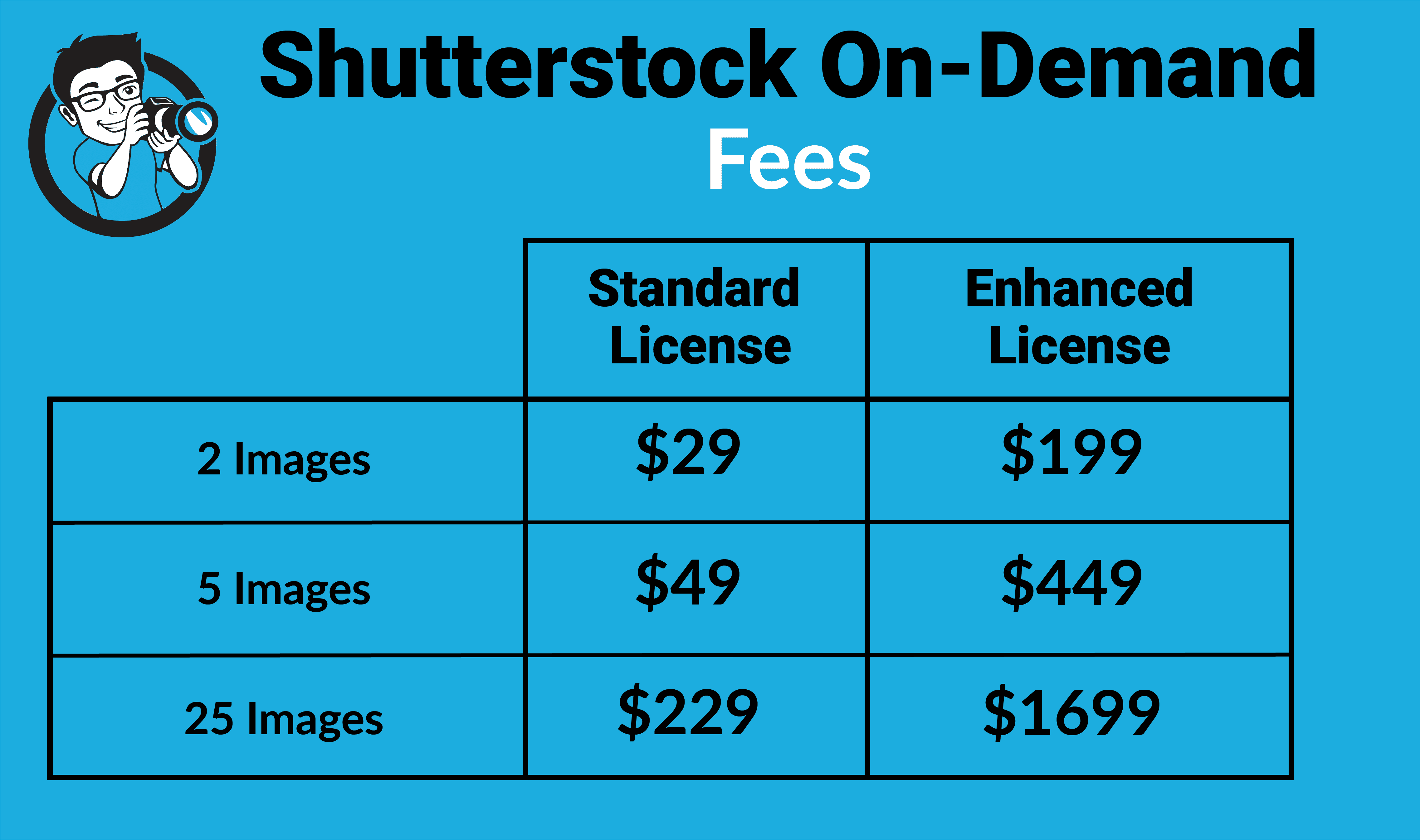Getting your photos priced right on Shutterstock can feel a bit overwhelming at first. You want to make sure you’re earning fairly while staying competitive in a bustling marketplace. Setting the perfect price isn’t just about numbers—it’s about understanding what buyers are willing to pay and how your work fits into the bigger picture. In this guide, we’ll walk through the essentials of pricing your photos smartly so you can maximize your earnings without undervaluing your talent. Whether you’re new to stock photography or looking to refine your pricing strategy, these tips will help you navigate the process with confidence.
Understanding Shutterstock’s Revenue and Payment Structure

Knowing how Shutterstock pays you is key to setting your prices wisely. Shutterstock operates on a royalty-based system, meaning you earn a percentage of each sale depending on your contributor level and the type of license purchased. Here’s a quick breakdown:
| Contributor Level | Royalty Rate | Details |
|---|---|---|
| Standard | 15% to 30% | Most contributors start here, earning a percentage based on sales volume. |
| Contributor Plus | 30% to 40% | Achieved after reaching certain sales milestones, earning higher royalties. |
| Elite | 40% and above | Top-tier contributors with the highest royalty rates. |
In addition to royalties, Shutterstock offers different license types—Standard and Enhanced. Standard licenses are more common and have lower prices, while Enhanced licenses allow for broader usage and higher prices, which can mean bigger earnings per sale.
When setting your photo prices, keep in mind that Shutterstock doesn’t set fixed prices for individual images. Instead, the platform offers a pricing guide for buyers, and your earnings depend on the license type purchased and your contributor level. Your goal should be to price your images in a way that attracts buyers while ensuring your royalty rate aligns with your income goals. Remember, increasing your sales volume while maintaining fair prices can lead to more consistent earnings over time.
Factors to Consider When Setting Your Photo Prices
Figuring out how much to charge for your photos on Shutterstock can feel a bit overwhelming at first. There are a lot of factors to weigh, and what might seem fair to you may not align with market expectations. Let’s break down some of the key considerations to help you set prices that are both competitive and reflective of your work’s value.
Quality and Uniqueness of Your Photos: High-quality images with excellent composition, lighting, and subject matter tend to command higher prices. Unique, creative shots that stand out from the crowd can also justify a premium price. Think about what makes your photos special and how that translates into value.
Market Demand and Trends: Keep an eye on what types of images are trending or in high demand. For example, images related to remote work, sustainability, or diverse representation are often sought after. If your photos align with current trends, you might price them higher due to increased demand.
Licensing Type and Usage Rights: Shutterstock offers different licensing options—standard and enhanced. Standard licenses are cheaper and suitable for most uses, but if your image is used in high-profile campaigns or large-scale advertising, the enhanced license can fetch a higher price. Clarify what licenses you’re offering and how they influence your pricing.
Experience and Portfolio Breadth: If you’re just starting out, you might want to price your photos more competitively to attract buyers and build your reputation. As your portfolio grows and your work gains recognition, you can gradually increase your prices.
Stock Photography Commission Structure: Remember, Shutterstock’s royalty rates are determined by your earnings tier, which is influenced by your total sales. Setting prices too high might reduce sales volume, while prices too low could undervalue your work. Finding a sweet spot is key.
Time and Effort Invested: Consider how much time and effort you put into creating each photo. If a shot took considerable effort, or if it required special equipment or post-processing, it might warrant a higher price.
Thinking through these factors can seem daunting, but the goal is to develop a pricing strategy that reflects your work’s quality, meets market needs, and aligns with your goals as a photographer. Flexibility is also important—don’t be afraid to experiment and adjust your prices as you learn what works best.
Strategies for Pricing Your Photos Competitively
Now that you understand the key factors influencing your pricing, it’s time to explore some practical strategies to set prices that are attractive to buyers yet fair to your work. Here are some tips to help you strike that balance:
- Research the Competition: Spend some time browsing Shutterstock and other stock photo platforms. See what similar photos are priced at and note the range. This will give you a benchmark and help you position your prices competitively.
- Start with a Baseline Price: Establish a baseline price based on your quality, experience, and market research. You can set an initial price and then adjust based on sales performance and feedback.
- Offer Tiered Pricing: Use Shutterstock’s licensing options—standard and enhanced—to create tiered pricing. This way, you cater to different buyers and usage needs, maximizing your earning potential.
- Adjust for Volume and Promotions: Consider offering discounts for bulk purchases or during promotional periods. This can encourage more downloads and help you gain exposure.
- Use Flexible Pricing for New Photos: When uploading new images, try pricing them slightly lower initially to attract early buyers and gather initial reviews or downloads. Once your images gain popularity, you can gradually increase the price.
- Monitor and Reassess: Regularly review your sales data. If certain images aren’t selling, try adjusting their prices or promoting them differently. Conversely, popular images might warrant a price increase over time.
Remember: Consistency in pricing helps build trust with buyers, but staying adaptable allows you to respond to market changes and improve your earnings. The key is to find a pricing sweet spot—one that values your work fairly while remaining attractive to a broad audience.
Tips for Increasing Your Earnings on Shutterstock
Growing your income on Shutterstock isn’t just about uploading as many photos as possible; it’s about being strategic and smart with your approach. Here are some tried-and-true tips to help you maximize your earnings:
Focus on Trending and Evergreen Topics
Stay ahead of the curve by researching what’s currently popular. Trends like remote work, sustainability, or health-related themes often see high demand. At the same time, don’t forget evergreen topics—think of those timeless subjects like business, nature, or celebrations—that remain consistently in demand. Combining trending and evergreen content can give you a steady stream of sales.
Optimize Your Metadata
Keywords are your best friends. Use descriptive, relevant, and specific keywords to make sure your photos are easily discoverable. Think about what potential buyers might search for and include synonyms or related terms. The more accurate your metadata, the higher the chance your images will appear in search results.
Offer Variety and Consistency
Upload a diverse portfolio to attract different buyers, but also maintain a consistent style or theme if you’re targeting a niche market. Regular uploads keep your portfolio fresh, which can improve your visibility on the platform. Consider creating collections or themed sets—these can boost sales as buyers often purchase multiple images that fit a specific project.
Leverage Seasonal and Event-Based Content
Seasonal photos—like holiday-themed images or back-to-school shots—can generate a spike in sales during specific times of the year. Planning ahead and uploading relevant content early can help you capitalize on these seasonal surges.
Engage with the Shutterstock Community
Participate in forums and connect with other contributors. Sharing tips and feedback can inspire new ideas and improve your work. Also, pay attention to what successful contributors are doing—sometimes, a little community insight can go a long way.
Use Analytics and Feedback
Regularly review which photos sell best and analyze your upload patterns. Shutterstock provides some insights into your performance—use this data to refine your strategy. If certain types of images perform well, consider creating more content in that vein.
Common Mistakes to Avoid When Pricing Your Photos
Pricing your photos correctly can be tricky, and making mistakes can cost you both sales and earnings. Here are some common pitfalls to watch out for—and how to avoid them:
1. Underpricing Your Work
It might seem tempting to set low prices to attract more buyers, but this can devalue your work and set a precedent that’s hard to break. Remember, quality images deserve fair compensation. Over time, consistent undervaluing can hurt your earnings and reputation.
2. Overpricing Without Justification
On the flip side, setting prices too high without matching the quality or uniqueness of your images can scare off potential buyers. Do some research on what similar images are priced at and be realistic about your work’s value.
3. Ignoring Market Trends and Demand
Prices should reflect current demand. If your images are in high demand, you might price slightly higher; if not, consider adjusting your prices or improving your portfolio. Staying flexible helps you find the sweet spot.
4. Not Adjusting Prices for Different Licensing Types
Shutterstock offers various licensing options—standard vs. enhanced. Make sure your pricing aligns with the licensing type. Enhanced licenses generally command higher prices, so don’t forget to set appropriate rates for these.
5. Failing to Consider Image Quality and Uniqueness
If your photo is generic or low quality, don’t expect high prices. Conversely, if your image is exceptional and rare, you can justify a higher price. Be honest about the value of your work and price accordingly.
6. Not Reviewing and Updating Prices Regularly
Market dynamics change, and so should your prices. Regularly review your pricing strategy and adjust based on performance, trends, and feedback. Staying proactive ensures you’re not leaving money on the table or undervaluing your work.
In summary, finding the right balance in pricing and avoiding these common mistakes can significantly impact your earnings on Shutterstock. Keep learning, stay flexible, and always aim to value your work fairly—your wallet will thank you!
Conclusion and Final Thoughts on Pricing Your Photos Effectively
Determining the right price for your photos on Shutterstock is essential for maximizing your earnings while maintaining competitiveness. Remember that pricing should reflect the quality, uniqueness, and effort involved in creating each image. It’s important to research the market and understand what buyers are willing to pay, as well as to consider your own goals and experience level. Setting a competitive yet fair price can help you attract more buyers and increase your sales volume over time.
Here are some key takeaways to keep in mind:
- Research the Market: Regularly review similar images to gauge appropriate pricing.
- Adjust Prices Strategically: Experiment with different price points and monitor sales performance.
- Balance Quality and Price: Higher quality images can command higher prices, but affordability matters in a competitive marketplace.
- Stay Consistent: Maintain consistent pricing to build trust and recognition among buyers.
- Leverage Promotions: Use discounts or special offers strategically to boost visibility and sales.
Ultimately, effective pricing is a balance between valuing your work and understanding market demand. Stay flexible, keep learning from your sales data, and adjust your prices accordingly. With patience and strategic planning, you can build a successful portfolio on Shutterstock and turn your photography passion into a profitable venture.


